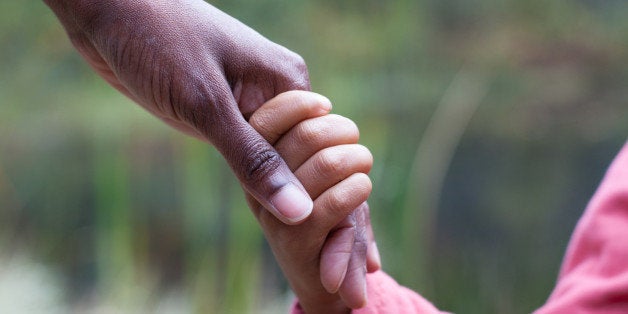
Tanka Kumari is expecting her fourth child, and she is afraid. Life is hard for her and her husband Setu in her remote village in the Sinhuli District of Nepal, and the couple had agreed long ago that they could not afford to have more children.
But in April 2015 a devastating earthquake struck Nepal, and everything changed. In the chaotic days following the disaster, the couple and their three children could not return to their damaged home, and the family planning card she used to track her contraceptive injections disappeared.
Tanka Kumari worries about her growing family's wellbeing and future. She worries she won't be able to give her children what they need -- and that they'll have to endure a similar upbringing of hunger and deprivation that she experienced as a child.
As Tanka Kumari's story illustrates, women often face unique vulnerabilities during times of crisis. Especially when they lose access to critical reproductive health services such as the contraception they rely on. Only through reliable access to quality family planning services, information and commodities can women and girls choose their own future, and that of their families.
Empowering women make reproductive decisions for themselves was the motivating principle behind the 2012 London Summit on Family Planning. It inspired the Family Planning 2020 (FP2020) global movement, which seeks to ensure an additional 120 million women and girls who wish to take charge of their fertility, can use modern contraception by 2020.
Overall, the partnership has made enormous strides in the past three years. FP2020 partners are bringing services to millions of women and girls who have never had access before, including the poorest, the most vulnerable and the hardest to reach. FP2020's latest progress report shows that an unprecedented 290.6 million women and girls are now using modern contraception in the initiative's 69 focus countries, an increase of 24.4 million from 2012. In the past year alone, 80 million unintended pregnancies, 26.8 million unsafe abortions and 111,000 maternal deaths have been averted.
Thirty-six countries have now made FP2020 commitments, bringing us to more than half of our focus countries, and 20 countries have developed costed implementation plans, which are critical tools in transforming ambitious family planning commitments into concrete programs and policies. Importantly, our data show that FP2020 commitment-making countries are overall making better progress than non-commitment-making countries when it comes to providing access so more women and girls can use modern contraception.
While our progress is significant, our results just aren't measuring up to our ambition.
The 24.4 million more women and girls using lifesaving contraception is 10 million fewer than we had hoped to reach by this time. If we continue at this rate, we risk missing our goal -- and leaving millions of women and girls without the care and services they need and deserve. As the challenge grows, our efforts must increase to keep pace. We must continue to challenge ourselves to be strategic and focused with our investments of time, energy and money if we want to close the gap toward 120 million.
The good news is that we have learned lessons that can help point the way forward. Now we need to pick up the pace. This means building on the momentum we've created and taking it further: increasing pledges, scaling up successful interventions and dedicating additional country and donor resources. Our research and data also show us that to move the needle, we need to focus on young people, improve the quality of family planning services, increase access to post-partum family planning, and catalyze efforts to reach the urban and rural poor.
By targeting our efforts now, we can keep our promise of bringing family planning services to an additional 120 million women and girls by 2020. Yes, our task is ambitious, but we knew that from the start.
The stakes are high: the benefits of family planning extend beyond individuals to communities and countries. They are essential to sustainable development -- with implications for access to education, protection from violence, and the ability to work and generate income. Simply put, FP2020's goal is a critical milestone on the journey to realizing the Sustainable Development Goal of universal access to family planning by 2030.
The right of women and girls to autonomy over their bodies, and all that this right implies, is fundamental to the success of the entire global enterprise to eradicate poverty.
If we meet our goal, we will be empowering women and girls to plan their own lives, families and futures. That's a promise worth keeping.